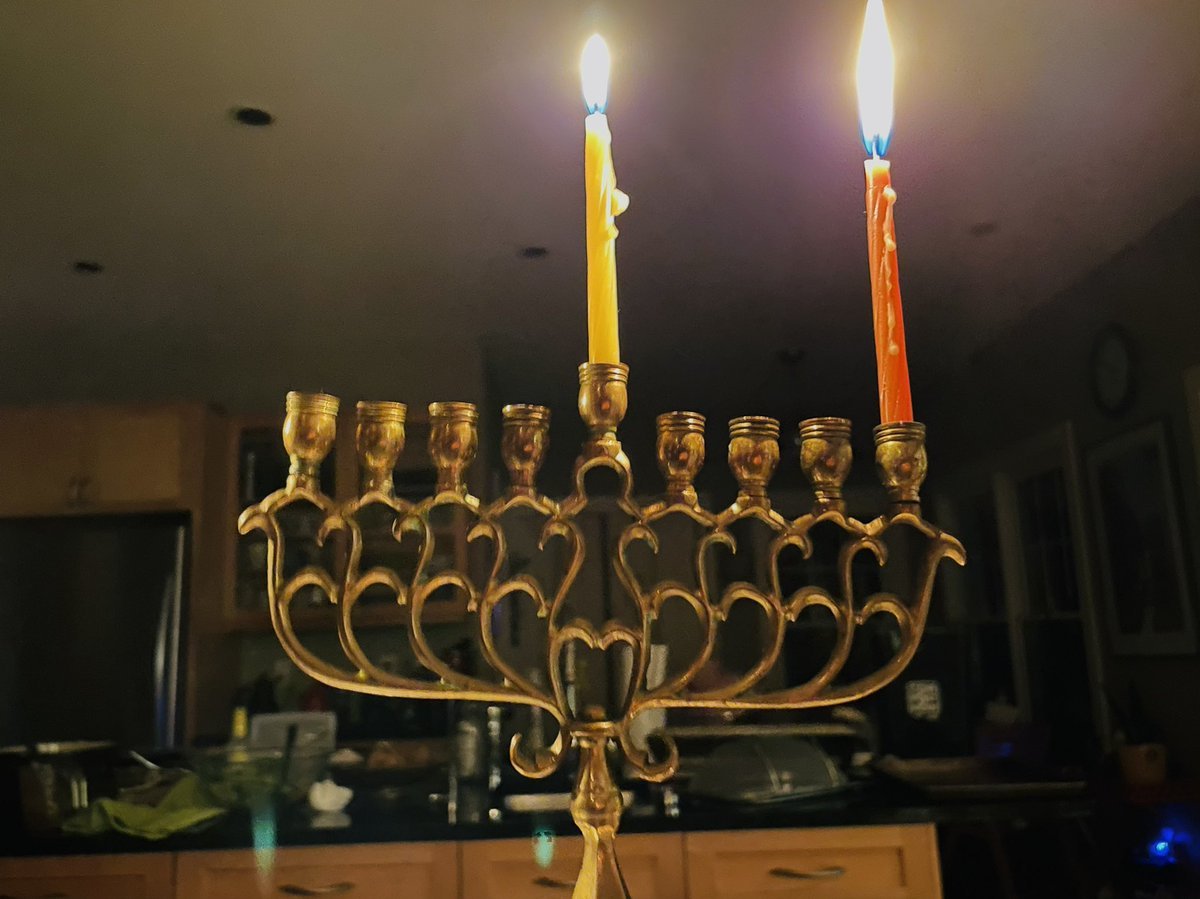Why the Chanukah Menorah Has Nine Branches
I haven’t done a lot of thinking about what it means that the Chanukah menorah has two additional branches on it from the OG menorah in the Temple. I am sure there’s some great Torah and Chasidus on this, and I would love if people shared some, but I’m gonna do some of my own.
Menorah is technically a generic word for a “lampstand” with branches, but everybody knows “the menorah” is the one described in the Torah to be used in the Temple, which had seven branches. The Talmud says you can’t use a seven-branch menorah outside the Temple, so here we are.
It’s not inaccurate to call the Chanukah menorah “a menorah,” but it is a little confusing to call it “the menorah.” There is actually a modern Hebrew word, “chanukiah,” which pedants will insist is the more accurate term to use.
The two menorahs are connected, of course.
Chanukah is a celebration of the liberation of the Temple, and the lighting of the chanukiah commemorates the relighting of the menorah, and specifically the miraculous number of days the little oil left was able to burn for. It’s like an extra lease on life for Judaism.
It’s pretty clear, though, that this symbolism involved a bit of patchwork mythmaking by the rabbis, which shouldn’t be surprising or upsetting to anyone with a grown-up relationship to religion and is Good, Actually™. But what does the nine-branch menorah represent?
This is the part I am SURE there is actual teaching on, but personally I am struck by how the chanukiah has MORE CANDLES than the one in the frickin Temple. I mean, if you fast-forward the story, the Temple WAS destroyed (again) eventually. The Chanukah victory is not eternal.
As I mentioned, in the aftermath of losing the Temple, the rabbis are very clear that we are not to fire up a seven-branch menorah outside of it, and this is related to why they get to work creating a reason for the chanukiah to have a different number. But why go UP?
There’s a whole thing in the Talmud about how Beit Hillel says we should light one additional candle each night, and Beit Shammai says we should light them all on the FIRST night and then go down. As usual, we hold by Hillel. But why, in this case?
Candles are pretty widely associated with holiness (think about Shabbat), and so the ruling is we should always be increasing in holiness, never decreasing. I guess that’s what we did with the menorah, too. We lost the Temple, but we still must increase in holiness.
The chanukiah is far from the only implement that reenacts the Temple in the home, though. the challah on the Shabbes table, for one thing. After the Temple is destroyed, its holy service is distributed, multiplied into the myriad homes of the Jewish people.
You might think the obvious place to reenact the service of the Temple is at the synagogue. For some things, like community rituals for processing things together, it is. But for things that form the HEART of life — family, food, generational transmission — HOME is the Temple.
The central commandment of Chanukah is “pirsumei nisa,” publicizing the miracle (i.e. the one about the eight-day candles). You’re supposed to put your chanukiah in view of the street and light it when people are on their way home. Chanukah is about SPREADING THE LIGHT.
We don’t light G_d’s lamp in one central place anymore. We fought for our freedom to keep doing that, but eventually we lost it. So what did we do instead? We decentralized holiness, and we need more light for that.
The last night of Chanukah (all nine candles) is timed to be on the darkest night of the year. The new moon of Tevet, however close it falls to the solstice in a given year, is max darkness. That is the night the rabbis chose for max light.

